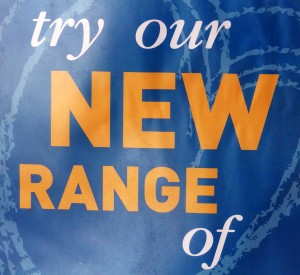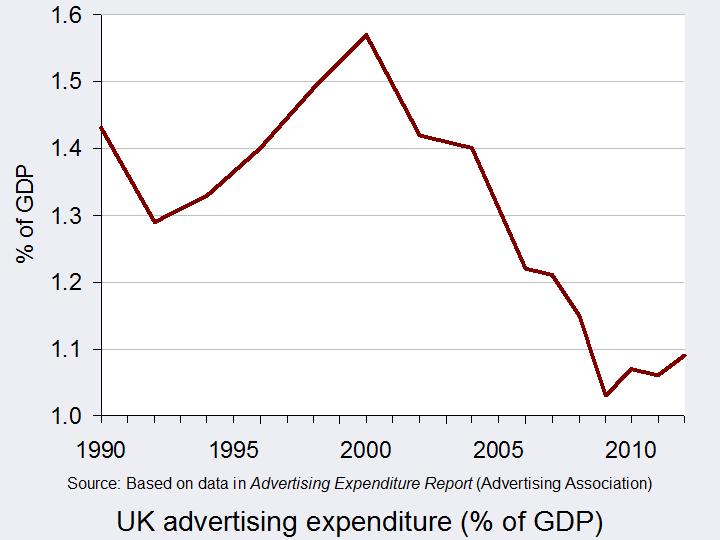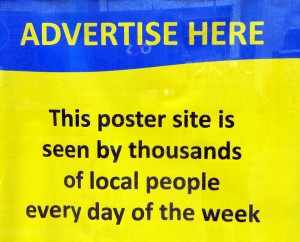 In many countries, train fares at peak times are higher than at off-peak times. This is an example of third-degree price discrimination. Assuming that peak-time travellers generally have a lower price elasticity of demand, the policy allows train companies to increase revenue and profit.
In many countries, train fares at peak times are higher than at off-peak times. This is an example of third-degree price discrimination. Assuming that peak-time travellers generally have a lower price elasticity of demand, the policy allows train companies to increase revenue and profit.
If the sole purpose of ticket sales were to maximise profits, the policy would make sense. Assuming that higher peak-time fares were carefully set, although the number travelling would be somewhat reduced, this would be more than compensated for by the higher revenue per passenger.
But there are external benefits from train travel. Compared with travel by car, there are lower carbon emissions per person travelling. Also, train travel helps to reduce road congestion. To the extent that higher peak-time fares encourage people to travel by car instead, there will be resulting environmental and congestion externalities.
The Scottish experiment with abolishing higher peak-time fares
 In October 2023, the Scottish government introduced a pilot scheme abolishing peak-time fares, so that tickets were the same price at any time of the day. The idea was to encourage people, especially commuters, to adopt more sustainable means of transport. Although the price elasticity of demand for commuting is very low, the hope was that the cross-price elasticity between cars and trains would be sufficiently high to encourage many people to switch from driving to taking the train.
In October 2023, the Scottish government introduced a pilot scheme abolishing peak-time fares, so that tickets were the same price at any time of the day. The idea was to encourage people, especially commuters, to adopt more sustainable means of transport. Although the price elasticity of demand for commuting is very low, the hope was that the cross-price elasticity between cars and trains would be sufficiently high to encourage many people to switch from driving to taking the train.
One concern with scrapping peak-time fares is that trains would not have the capacity to cope with the extra passengers. Indeed, one of the arguments for higher peak-time fares is to smooth out the flow of passengers during the day, encouraging those with flexibility of when to travel to use the cheaper and less crowded off-peak trains.
This may well apply to certain parts of the UK, but in the case of Scotland it was felt that there would be the capacity to cope with the extra demand at peak time. Also, in a post-COVID world, with more people working flexibly, there was less need for many people to travel at peak times than previously.
Reinstatement of peak-time fares in Scotland
It was with some dismay, therefore, especially by commuters and environmentalists, when the Scottish government decided to end the pilot at the beginning of October 2024 and reinstate peak-time fares – in many cases at nearly double the off-peak rates. For example, the return fare between Glasgow and Edinburgh rose from £16.20 to £31.40 at peak times.
The Scottish government justified the decision by claiming that passenger numbers had risen by only 6.8%, when, to be self-financing, an increase of 10% would have been required. But this begs the question of whether it was necessary to be self-financing when the justification was partly environmental. Also, the 6.8% figure is based on a number of assumptions that could be challenged (see The Conversation article linked below). A longer pilot would have helped to clarify demand.
Other schemes
A number of countries have introduced schemes to encourage greater use of the railways or other forms of public transport. One of these is the flat fare for local journeys. Provided that this is lower than previously, it can encourage people to use public transport and leave their car at home. Also, its simplicity is also likely to be attractive to passengers. For example, in England bus fares are capped at £2. Currently, the scheme is set to run until 31 December 2024.
 Another scheme is the subscription model, whereby people pay a flat fee per month (or week or year, or other time period) for train or bus travel or both. Germany, for example, has a flat-rate €49 per month ‘Deutschland-Ticket‘ (rising to €58 per month in January 2025). This ticket provides unlimited access to local and regional public transport in Germany, including trains, buses, trams, metros and ferries (but not long-distance trains). This zero marginal fare cost of a journey encourages passengers to use public transport. The only marginal costs they will face will be ancillary costs, such as getting to and from the train station or bus stop and having to travel at a specific time.
Another scheme is the subscription model, whereby people pay a flat fee per month (or week or year, or other time period) for train or bus travel or both. Germany, for example, has a flat-rate €49 per month ‘Deutschland-Ticket‘ (rising to €58 per month in January 2025). This ticket provides unlimited access to local and regional public transport in Germany, including trains, buses, trams, metros and ferries (but not long-distance trains). This zero marginal fare cost of a journey encourages passengers to use public transport. The only marginal costs they will face will be ancillary costs, such as getting to and from the train station or bus stop and having to travel at a specific time.
Articles
- Why a pilot scheme removing peak rail fares should have been allowed to go the distance
The Conversation, Rachel Scarfe (8/10/24)
- Return of peak rail fares a costly blow for commuters and climate, Scottish Greens say
Bright Green, Chris Jarvis (6/10/24)
 Commuters react to return of peak train fares in Scotland
Commuters react to return of peak train fares in ScotlandBBC News (1/10/24)
- Perth peak rail fares to Edinburgh rise by almost 60 percent as pilot scheme ends
Daily Record, Alastair McNeill (4/10/24)
- Ditch peak-time rail fares across UK, campaigners say
iNews, Adam Forrest (30/9/24)
- Train fares reduced by up to 20% in East Yorkshire
Rail Advent, Roger Smith (26/9/24)
- Deutschland-Ticket: Germany’s popular monthly transport pass will soon be more expensive
Euronews, Angela Symons (24/9/24)
- Fare Britannia: a new approach to public transport ticketing for the UK
Greenpeace report, Leo Eyles, Tony Duckenfield and Jim Steer (19/9/24)
- Ministers urged to trial monthly ‘climate card’ in North of England to save rail commuters money and cut emissions
About Manchester, Nigel Barlow (20/9/24)
Questions
- Identify the arguments for and against having higher rail fares at peak times than at off-peak times
- Why might it be a good idea to scrap higher peak-time fares in some parts of a country but not in others?
- Provide a critique of the Scottish government’s arguments for reintroducing higher peak-time fares.
- With reference to The Conversation article, why is it difficult to determine the effect on demand of the Scottish pilot of scrapping peak-time fares?
- What are the arguments for and against the German scheme of having a €49 per month public transport pass for local and regional transport with no further cost per journey? Should it be extended to long-distance trains and coaches?
- In England there is a flat £2 single fare for buses. Would it be a good idea to make bus travel completely free?
 In a recent blog post on this site about the Microsoft/ Activision Blizzard merger, the European Commission had just reached a decision to approve the merger subject to remedies, but the investigations in the USA and UK were still ongoing. Since then, the merger has been approved by competition authorities around the world, including in the USA and UK, and thus the merger has gone through.
In a recent blog post on this site about the Microsoft/ Activision Blizzard merger, the European Commission had just reached a decision to approve the merger subject to remedies, but the investigations in the USA and UK were still ongoing. Since then, the merger has been approved by competition authorities around the world, including in the USA and UK, and thus the merger has gone through.
However, there were some differences in the way the case unfolded under the regulation of these three competition authorities.
The European Commission’s (EC) decision
The European Commission (EC) was the first to give the merger the green light. The EC’s in-depth investigation revealed concerns about the market for the distribution of games via cloud game streaming services. In particular, the concern was related to the possibility that Microsoft might make Activision’s games exclusive to its own cloud game streaming service (Game Pass Ultimate) and restrict access from competing cloud game streaming providers.
The EC argued that this in turn could strengthen Microsoft’s position in the market for PC operating systems, as Microsoft may have an incentive to limit or reduce the quality of the streaming of Activision’s games on PC’s which do not use the Windows operating system.
Thus, while the merger was approved, this was subject to remedies. These remedies included 10-year licensing commitments from Microsoft, as outlined in the EC’s press release:
These licenses will ensure that gamers that have purchased one or more Activision games on a PC or console store, or that have subscribed to a multi-game subscription service that includes Activision games, have the right to stream those games with any cloud game streaming service of their choice and play them on any device using any operating system.
This type of remedy is called a behavioural remedy and often requires the merging firms to commit to taking particular actions post-merger. Unlike structural remedies (which may for example, require the merging firms to sell off an entire business unit), behavioural remedies often require monitoring and enforcement by competition authorities. The EC argued that the deal, with these behavioural remedies, could strengthen competition in the market for cloud gaming.
The Federal Trade Commission’s (FTC) decision
 The FTC, in the USA, had similar concerns to those of the EC related to the cloud gaming market. These were outlined in the FTC’s press release:
The FTC, in the USA, had similar concerns to those of the EC related to the cloud gaming market. These were outlined in the FTC’s press release:
[The deal] would enable Microsoft to suppress competitors to its Xbox gaming consoles and its rapidly growing subscription content and cloud-gaming business.
The FTC also argued that when Microsoft had previously acquired gaming content, it had made this content exclusive to Microsoft consoles. This could result in higher prices, and reduced quality, choice and innovation. To this end, the FTC appealed in an attempt to block the deal, but the Court ruled in favour of the deal going ahead.
During this time, Microsoft announced that it had committed to keeping Call of Duty on Sony’s PlayStation after the merger, and this likely contributed towards the court’s decision. Hence, the FTC was unsuccessful in its attempt to halt the merger.
The Competition and Markets Authority’s (CMA) decision
 The final hurdle remaining for Microsoft, was the CMA’s approval. As outlined in a previous blog post on this site, the CMA’s phase 2 investigation revealed similar concerns about the supply of cloud gaming services (amongst concerns related to the market for the supply of console gaming services, which were later dispelled), and whilst Microsoft offered some commitments similar to those accepted by the EC, the CMA did not deem these to be sufficient to address its concerns and thus prohibited the merger.
The final hurdle remaining for Microsoft, was the CMA’s approval. As outlined in a previous blog post on this site, the CMA’s phase 2 investigation revealed similar concerns about the supply of cloud gaming services (amongst concerns related to the market for the supply of console gaming services, which were later dispelled), and whilst Microsoft offered some commitments similar to those accepted by the EC, the CMA did not deem these to be sufficient to address its concerns and thus prohibited the merger.
The CMA’s published remedies guidance suggests that the regulator has a preference for structural remedies over behavioural remedies. One of the reasons for this is because of the requirement to monitor and enforce the commitments, and this therefore formed part of the CMA’s reasons for not accepting the remedies. Unsurprisingly, Microsoft appealed this decision to the UK’s Competition Appeals Tribunal (CAT), probably partly driven by the fact that the EC accepted similar remedies to those rejected by the CMA. However, Microsoft and the CMA agreed that if the appeal was paused, Microsoft could propose a new deal.
The new deal: did the CMA make a U-turn?
 In August 2023, Microsoft submitted a new restructured deal for the CMA to review. As described by the Chief Executive of the CMA, this deal was “substantially different from what was put on the table previously” and was therefore investigated as a separate merger case under the CMA’s phase 1 processes.
In August 2023, Microsoft submitted a new restructured deal for the CMA to review. As described by the Chief Executive of the CMA, this deal was “substantially different from what was put on the table previously” and was therefore investigated as a separate merger case under the CMA’s phase 1 processes.
The new deal meant that Microsoft would no longer be purchasing the cloud streaming rights held by Activision. Instead, the cloud streaming rights would be sold to an independent third-party game publisher – Ubisoft. This means that Microsoft will not be in control of the cloud gaming rights for Activision’s gaming content (outside of the EEA), and therefore will not be able to restrict its competitors’ access to Activision’s games, which was one of the main concerns outlined by the CMA based on the initial merger proposal. The new deal also opens up the possibility that Activision’s games will be made available on cloud gaming services that run on a non-Windows operating system.
On 13 October, the CMA approved this deal, subject to the cloud gaming rights being sold to Ubisoft, and some subsequent commitments from Microsoft in relation to its relationship with Ubisoft post-merger, as outlined in the CMA’s final report. However, the Chief Executive of the CMA has emphasised that they are unhappy with the way that Microsoft dealt with negotiating the approval of the merger:
But businesses and their advisors should be in no doubt that the tactics employed by Microsoft are no way to engage with the CMA. Microsoft had the chance to restructure during our initial investigation but instead continued to insist on a package of measures that we told them simply wouldn’t work. Dragging out proceedings in this way only wastes time and money.
What’s next in big tech?
While the merger deal has now gone through, the FTC has recently re-opened its case against Microsoft, which will continue to unfold over the next couple of months until December when the case will appear in Court. This means it is possible that the FTC could attempt to undo the merger, though this would be challenging.
In the tech market more broadly, the CMA has recently launched a market investigation into cloud services. While the focus of this blog post was on cloud gaming, cloud services are now increasingly being used by many businesses. The CMA’s issues statement suggests that a key focus of its investigation will be on the ability for customers to switch between cloud service providers. Microsoft is one of the largest providers of cloud services in the UK, and therefore it is inevitable that it will be under scrutiny. Given all three regulators’ recent efforts to ‘crackdown’ on big tech, this is just one of a series of cases that will be interesting to see unfold.
Articles
Competition authorities documentation
Questions
- Discuss the effectiveness of behavioural remedies vs structural remedies for a merger.
- Why might the competition authorities have been concerned about the possibility of Microsoft making Activision’s games exclusive to its own cloud game streaming service? Is exclusive dealing always anti-competitive?
- Why was the transfer of the cloud game streaming rights to Ubisoft seen as a suitable remedy?
Effects on competition in the console and cloud gaming markets
 Many people in the games industry expected the Competition and Markets Authority (CMA) to approve Microsoft’s proposed takeover of the games business, Activision Blizzard. However, in its final report published on 26 April, the CMA stated that the takeover would result in a substantial lessening of competition (SLC) in the supply of cloud gaming services in the UK. It rejected a behavioural remedy proposed by Microsoft and concluded that the merger should be prohibited.
Many people in the games industry expected the Competition and Markets Authority (CMA) to approve Microsoft’s proposed takeover of the games business, Activision Blizzard. However, in its final report published on 26 April, the CMA stated that the takeover would result in a substantial lessening of competition (SLC) in the supply of cloud gaming services in the UK. It rejected a behavioural remedy proposed by Microsoft and concluded that the merger should be prohibited.
When analysing the potential impact of this merger, the CMA focused on the following three issues:
- How important is the availability of Activision Blizzard’s games for the competitiveness of Microsoft’s rivals in the console and cloud gaming market? If, following the merger, Microsoft used its control over Activision Blizzard to restrict the availability of the games, would this significantly harm the competitiveness of their rivals?
- If restricting the availability of the games did harm its rivals, would it be profitable for Microsoft to do so? Do the benefits outweigh the costs? The major benefit for Microsoft is the additional sales this generates as consumers switch to its products to gain access to Activision’s games. The major cost is the forgone sales of the games to their rivals in the console and cloud gaming market.
- If it is profitable for Microsoft to limit the availability of the games, would this policy lead to a substantial lessening of competition (SLC) in the console and cloud gaming market? To answer this question the CMA compared the level of competition that would be most likely to occur if the merger were to proceed with the level if the deal were prohibited? In other words, it needed to identify the counterfactual.
 In response to the first issue, the CMA judged that restricting access to Activision Blizzard’s games post-merger would significantly harm the competitiveness of Microsoft’s rivals in both the console and cloud gaming markets. However, its judgment on the second issue differed between the two markets. Why was this? One key issue was the difference in the relative market power of Microsoft in cloud vs console gaming.
In response to the first issue, the CMA judged that restricting access to Activision Blizzard’s games post-merger would significantly harm the competitiveness of Microsoft’s rivals in both the console and cloud gaming markets. However, its judgment on the second issue differed between the two markets. Why was this? One key issue was the difference in the relative market power of Microsoft in cloud vs console gaming.
One common indicator used to analyse the market position of a business relative to its rivals is market share. Using data on revenues generated from the sales of hardware, associated games and subscription services, console gaming market shares in the UK for 2021 were as follows:
- Sony (PlayStation): 40% – 50%
- Microsoft (xBox): 30% – 40%
- Nintendo (Switch): 10% – 20%
Given the important market position of the PlayStation, limiting the ability of its users to purchase Activision games would result in Microsoft forgoing significant sales and revenue. Detailed analysis of the data by the CMA, indicated that the costs outweighed the benefits and so Microsoft did not have a commercial incentive to limit the availability of the games in this market. Therefore, the CMA concluded that the merger would not result in a SLC in the console gaming market. This finding was discussed in more detail in a blog on this website in March 2023.
The CMA judged that Microsoft had a much stronger position in the market for cloud gaming.
Cloud gaming services
 Cloud gaming offers consumers a new way of playing graphically complex games. In this sector of the market, the games run on remote servers/data centres and then stream over the internet to the user’s device. The great advantage with this approach is that it enables consumers to play games on less powerful hardware devices such as smartphones, tablets, smart televisions, and standard PCs. Although the market is currently quite small it, has grown significantly over the past couple of years. Some people argue that it has the potential to make a dramatic change to the gaming market in the same way that businesses such as Netflix and Spotify have transformed the film, TV, and music industries.
Cloud gaming offers consumers a new way of playing graphically complex games. In this sector of the market, the games run on remote servers/data centres and then stream over the internet to the user’s device. The great advantage with this approach is that it enables consumers to play games on less powerful hardware devices such as smartphones, tablets, smart televisions, and standard PCs. Although the market is currently quite small it, has grown significantly over the past couple of years. Some people argue that it has the potential to make a dramatic change to the gaming market in the same way that businesses such as Netflix and Spotify have transformed the film, TV, and music industries.
It is more difficult to judge the relative market position of firms in a new and dynamic market, where things can change very quickly. The use of market share data is less informative but can still offer some insights. To estimate market shares in cloud gaming, the CMA used data on the number of monthly active users (MAUs). The figures for paid services in the UK for 2022 were as follows:
- xCloud (Microsoft): 70% – 80%
- PlayStation Cloud Gaming (Sony): 20% – 30%
- Boosteroid: 0 – 5%
- Nvidia GFN: 0 – 5%
Data suggest that Microsoft has a much stronger position in this market than in console gaming. There is also evidence that its market position is becoming more dominant. The same market shares for xCloud and PlayStation Gaming in 2021 were 40% – 50% and 50% – 60% respectively.
Given some of the limitations of using market-share data in a new and dynamic market, the CMA analysed other information about the sector to assess Microsoft’s market position. The investigation identified three key factors that could give Microsoft a significant cost advantage over its rivals: cloud infrastructure, the Windows operating system and access to a wide variety of games.
- Infrastructure: Microsoft’s ownership of Azure, a major cloud computing platform, could give it a significant cost advantage over its rivals in the future. A rival firm would need to develop it own cloud infrastructure or purchase these services from a third-party supplier.
- The Windows operating system: Given that far more games are developed for Windows as opposed to other operating systems, using Windows on a cloud infrastructure system gives a supplier access to large number of games. As it already owns Windows, Microsoft will be able to supply the operating system to its own cloud gaming service at little additional cost whereas its rivals will have to pay a license fee.
- Access to a wide range of games: Microsoft already owns twenty-four development studios that produce some very successful games such as Minecraft and Halo. It also has commercial relationships with other third-party developers who produce games for the Xbox console. This gives Microsoft another advantage over many of its rivals.
Given this evidence on Microsoft’s strong market position, the CMA concluded that the benefits to the company of restricting the availability of the games in the cloud gaming market outweighed the costs.
If Microsoft has commercial incentives to restrict the availability of Activision’s games, would this strategy lead to a SLC in the market for cloud gaming? To answer this question, the CMA had to identify the counterfactual: i.e. the most likely outcome in the market if the merger did not proceed. Following detailed analysis of the evidence, the competition authority concluded that Activision was likely to make its games available to different cloud gaming services if the deal did not take place.
Given Microsoft’s (a) strong market position and (b) limited number of relatively small competitors in cloud gaming, the CMA concluded that Microsoft’s commercial incentive to restrict the availability games would lead to a SLC compared to the counterfactual.
Martin Coleman, the chair of the independent panel of experts who conducted the CMA’s investigation, stated that:
Microsoft already enjoys a powerful position and head start over other competitors in cloud gaming and this deal would strengthen that advantage giving it the ability to undermine new and innovative competitors.
In response to these competition concerns, Microsoft offered to supply Activision games to certain cloud gaming services for a 10-year period. However, the CMA concluded that this behavioural remedy was not enough to address the competition issues raised by the merger and recommended that the deal be prohibited.
Microsoft’s immediate response was to appeal the decision to the Competition Appeal Tribunal.
The Federal Trade Commission is currently investigating the impact of the deal in the USA while the European Commission has just completed its investigation in the European Union. On 15 May, the EC announced that Microsoft’s behavioural remedy did fully address the competition concerns identified during its investigation. Therefore, the merger was approved on condition that Microsoft fully implemented the actions outlined in the remedy.
It will be interesting to read the recommendations of the FTC when the final results of its investigation are published later this year.
Articles
CMA and EC press releases
Questions
- Discuss the barriers to entry that exist in both the console and cloud gaming markets.
- Outline some of the issues when trying to calculate market shares in cloud gaming.
- What is meaning of the term ‘input foreclosure’? How is this relevant to the Microsoft/Activision case?
- What is the difference between a behavioural and a structural remedy? In what circumstances is a behavioural remedy most likely to be effective?
- Discuss some of the potential limitations with the behavioural remedy proposed by Microsoft.
- Explain why Microsoft’s position in the downstream market for cloud gaming is likely to influence incentives it faces to restrict the availability of Activision’s games post-merger.
Why did a competition authority change its mind on one aspect of this merger?
In January 2022, Microsoft announced its plan to acquire Activision Blizzard for $68.7 billion. Activision Blizzard is one of the largest games publishers in the world and famous for titles such as Call of Duty and World of Warcraft. Sales revenue from Call of Duty: Modern Warfare II was over $10 billion within ten days of its release in 2022. Given Microsoft’s ownership of the Xbox, one of the three devices that dominate the market for gaming consoles, the deal was always likely to raise competition concerns.
Potential competition issues
 Following Phase 1 and 2 merger investigations by the Competition and Markets Authority (CMA) a number of competition issues were raised. One particular concern was in the market for gaming consoles and the potential impact of the merger on the future availability of Call of Duty (CoD). Some of the key findings of the initial research undertaken by the CMA were that:
Following Phase 1 and 2 merger investigations by the Competition and Markets Authority (CMA) a number of competition issues were raised. One particular concern was in the market for gaming consoles and the potential impact of the merger on the future availability of Call of Duty (CoD). Some of the key findings of the initial research undertaken by the CMA were that:
- Sony’s PlayStation was a much closer rival for the Xbox than the Nintendo Switch, which tends to offer more family-orientated games.
- PlayStation users spend significant amounts of gametime playing CoD.
- Game availability is a key factor that influences console purchase decisions.
- Twenty-four percent of PlayStation users who play CoD stated that they would not purchase future versions of the console if CoD was unavailable on the platform.
These findings suggest that there are commercial incentives for Microsoft to limit the availability of CoD on the PlayStation. For example, the newly merged business could make future versions of the game exclusive to the Xbox – total exclusivity. Alternatively, it could adopt a policy of partial exclusivity. For example, it could only make versions of CoD available on the PlayStation that exclude some of its more popular features.
 There are costs to Microsoft of implementing a policy of total or partial exclusivity. For example, 76% per cent of PlayStation users who play CoD stated that they would not switch consoles if future versions of the game were made unavailable. By making CoD exclusive to Xbox users, Microsoft would lose revenue from forgoing potential sales of the game to this group of users. The firm may also suffer reputational damage if there was a social media backlash against an exclusivity decision.
There are costs to Microsoft of implementing a policy of total or partial exclusivity. For example, 76% per cent of PlayStation users who play CoD stated that they would not switch consoles if future versions of the game were made unavailable. By making CoD exclusive to Xbox users, Microsoft would lose revenue from forgoing potential sales of the game to this group of users. The firm may also suffer reputational damage if there was a social media backlash against an exclusivity decision.
However, these costs of implementing a policy of exclusivity could be outweighed by the potential benefits. These include:
- The additional sales of consoles as some users switch from the PlayStation to the Xbox to gain access to CoD.
- the sale of CoD and other games to these additional Xbox users.
To quantify these costs and benefits, the CMA used a financial model that includes information on the amounts of money users typically spend on the Xbox platform and CoD over a five-year period. This ‘lifetime value of customers’ model found that it would be profitable for Microsoft to implement a policy of exclusivity post-merger.
The CMA also noted that in the majority of cases where Microsoft had previously acquired gaming studios, the subsequent release of games had been made exclusive to the Xbox.
CMA findings
 Following its analysis of the case, the CMA published its provisional findings on the 8th February 2023. One key finding was that the merger would harm consumers, as it would lead to a substantial lessening of competition in the supply of console gaming services. The CMA argued that the acquisition should proceed only if Activision Blizzard sold off the parts of its business responsible for producing CoD. This is a structural remedy.
Following its analysis of the case, the CMA published its provisional findings on the 8th February 2023. One key finding was that the merger would harm consumers, as it would lead to a substantial lessening of competition in the supply of console gaming services. The CMA argued that the acquisition should proceed only if Activision Blizzard sold off the parts of its business responsible for producing CoD. This is a structural remedy.
Microsoft rejected these findings and argued that the financial modelling used by the CMA was based on inaccurate data. In its formal written response to the competition authority the company argued that:
- The potential gains from a policy of exclusivity had been calculated over a five-year period whereas the costs (i.e. the forgone sales of CoD) had only been calculated over a one-year period. More accurate analysis should compare both the potential gains and losses over a five-year period.
- When more recent data are used to calculate the amounts of money users typically spend on the Xbox platform and CoD over a five-year period, the figure is lower than in the original work by the CMA.
Revised CMA findings
Having adjusted its analysis to take account of these criticisms, the CMA published an update to its Provisional Findings on 24th March 2023. In this update the competition authority stated that:
The analysis now shows that it would not be commercially beneficial to Microsoft to make CoD exclusive to Xbox following the deal, but that Microsoft will instead still have the incentive to continue to make the game available on PlayStation.
Therefore, just six weeks after publishing its Provisional Findings the CMA changed its conclusion and stated that the merger would not result in a substantial lessening of competition in the market for the supply of console gaming services in the UK.
In response to these changes an ex-CMA lawyer stated that:
This is extremely unusual. Restating your provisional findings is something ‘you would rather die than do’.
It is important to remember that the investigation by the CMA also raised concerns about the impact of the acquisition on competition in the cloud gaming market. These concerns remain unaffected by these updated findings and a final report will be published by the CMA at the end of April.
Competition authorities from 16 different countries/regions are also investigating the deal, including the Federal Trade Commission in the USA and the European Commission. It will be interesting to see if these authorities agree on the potential impact of the merger on competition.
Articles
CMA documentation
Questions
- Under what circumstances could a merger result in a substantial lessening of competition?
- Summarise the thresholds that have to be met by a potential merger before it is investigated by the Competition and Markets Authority.
- Explain the direct and indirect network effects that exist in the console gaming market. To what extent do they create barriers to entry?
- Outline some different ways that Microsoft could introduce a policy of partial exclusivity for the Call of Duty franchise of games.
- What would be the impact of a policy of exclusivity on the cross price elasticity of demand between Xbox and PlayStation consoles?
- Outline the difference between behavioural and structural remedies for merger.
- Discuss why the acquisition of Activision by Microsoft might reduce competition in the cloud gaming market.
 Adverts are increasingly diverse, ranging from families using various products and promoting their qualities, to a gorilla drumming, a horse dancing and a monkey drinking tea! But, how important is advertising to a product’s brand. Does it have a positive effect on sales and profitability?
Adverts are increasingly diverse, ranging from families using various products and promoting their qualities, to a gorilla drumming, a horse dancing and a monkey drinking tea! But, how important is advertising to a product’s brand. Does it have a positive effect on sales and profitability?
The key role of advertising is to sell more products and many firms spend a huge amount on advertising campaigns. Indeed, over £16bn was spent on advertising in 2012. Given that the economy is still vulnerable and many firms have seen their sales and profits decline, this is a huge amount. Procter & Gamble spent over £200 million, British Sky Broadcasting spent £145 million and Tesco spent £114 million in 2011.
 Advertising increases consumer awareness of the product and its features, but also actively aims to persuade people to purchase the product. By differentiating the product through adverts a company aims to shift the demand curve to the right and also make it more inelastic, by persuading customers that there are no (or few) close substitutes.
Advertising increases consumer awareness of the product and its features, but also actively aims to persuade people to purchase the product. By differentiating the product through adverts a company aims to shift the demand curve to the right and also make it more inelastic, by persuading customers that there are no (or few) close substitutes.
 Since the start of the economic downturn in 2008, advertising expenditure has fallen, as companies have seen a decline in their budgets. From a high of £18.61 billion in 2004, the Advertising Association found that it fell to £14.20 billion in 2009 at constant 2008 prices. In the last few years, advertising expenditure has remained at around £14.5 billion. But, is cutting back on advertising a sensible strategy during a recession? Of course budgets are tight for both firms and consumers, but many suggest that media-savvy firms would actually benefit from maintaining their advertising. By doing so firms could take advantage of weaker competitors by increasing their market share and establishing their brand image in the long run.
Since the start of the economic downturn in 2008, advertising expenditure has fallen, as companies have seen a decline in their budgets. From a high of £18.61 billion in 2004, the Advertising Association found that it fell to £14.20 billion in 2009 at constant 2008 prices. In the last few years, advertising expenditure has remained at around £14.5 billion. But, is cutting back on advertising a sensible strategy during a recession? Of course budgets are tight for both firms and consumers, but many suggest that media-savvy firms would actually benefit from maintaining their advertising. By doing so firms could take advantage of weaker competitors by increasing their market share and establishing their brand image in the long run.
 It’s also important to consider another link between economic growth and advertising. Research suggests that advertising can be an important factor for economic growth. A three-year study undertaken by the Advertising Association and Deloitte, commencing in January 2013 suggests that for every £1 spent on advertising in the UK, £6 is generated for the wider economy. Based on these predictions, the estimated £16bn that was spent on ad campaigns in 2011 added over £100 billion to the UK’s GDP.
It’s also important to consider another link between economic growth and advertising. Research suggests that advertising can be an important factor for economic growth. A three-year study undertaken by the Advertising Association and Deloitte, commencing in January 2013 suggests that for every £1 spent on advertising in the UK, £6 is generated for the wider economy. Based on these predictions, the estimated £16bn that was spent on ad campaigns in 2011 added over £100 billion to the UK’s GDP.
 So, perhaps encouraging more advertising is the answer to the UK’s economic dilemma. This is certainly the opinion of Matt Barwell, the consumer marketing and innovation director of Diageo Western Europe, who said:
So, perhaps encouraging more advertising is the answer to the UK’s economic dilemma. This is certainly the opinion of Matt Barwell, the consumer marketing and innovation director of Diageo Western Europe, who said:
People fundamentally believe in advertising but a lot of the conversation focuses on negative elements. People rarely get the opportunity to talk about the positive role advertising plays in terms of wealth creation, exports and the social benefits that it provides. These are all things that many of us take for granted.
If private firms can therefore be encouraged to boost their marketing campaigns, jobs may be created, demand for products will rise and with the help of the multiplier, the economy may strengthen. Advertising has both pros and cons and opinions differ on what makes a good advert. But, whatever your opinion of the role of advertising, it is certainly an important aspect of any economy. The following articles take a view of advertising.
Articles
Could we advertise ourselves out of recession? Marketing Week, Lucy Tesseras (31/1/13)
Advertising in times of recession: A question of value The Open University, Tom Farrell (13/3/09)
Recession spending on advertising and R&D Penn State, Smeal College of Business
Nothing to shout about The Economist (30/7/09)
UK’s payday lenders face restrictions on advertising Reuters (6/3/13)
Value claims improve advertising effectiveness in recessionary times Com Score, Diane Wilson (17/9/13)
Advertising in a bad economy About Advertising, Apryl Duncan
Advertising worth £100bn to UK economy The Telegraph, Graham Ruddick (31/1/13)
Can advertising be the motor that gets the struggling UK economy out of first gear? More about advertising (26/2/13)
Adverts ‘worth £100bn to UK’ Independent, Giddeon Spanier (30/1/13)
Report
Advertising Pays – How advertising fuels the UK economy Advertising Association & Deloitte (30/1/13)
 Advertising Pays – How advertising fuels the UK economy: Accompanying video presentation Advertising Association & Deloitte: on YouTube (30/1/13)
Advertising Pays – How advertising fuels the UK economy: Accompanying video presentation Advertising Association & Deloitte: on YouTube (30/1/13)
Questions
- What is the role of advertising?
- Using a demand and supply diagram, illustrate and explain the role of advertising.
- During a recession, why would you expect advertising expenditure to fall? What impact would you expect this to have in your diagram from question 1?
- How might firms that sustain their advertising expenditure during a downturn benefit?
- Explain the link between advertising and the economy.
- Why could a higher level of advertising boost economic growth?
- Are there any negative externalities from advertising?
 In many countries, train fares at peak times are higher than at off-peak times. This is an example of third-degree price discrimination. Assuming that peak-time travellers generally have a lower price elasticity of demand, the policy allows train companies to increase revenue and profit.
In many countries, train fares at peak times are higher than at off-peak times. This is an example of third-degree price discrimination. Assuming that peak-time travellers generally have a lower price elasticity of demand, the policy allows train companies to increase revenue and profit.  In October 2023, the Scottish government introduced a pilot scheme abolishing peak-time fares, so that tickets were the same price at any time of the day. The idea was to encourage people, especially commuters, to adopt more sustainable means of transport. Although the price elasticity of demand for commuting is very low, the hope was that the cross-price elasticity between cars and trains would be sufficiently high to encourage many people to switch from driving to taking the train.
In October 2023, the Scottish government introduced a pilot scheme abolishing peak-time fares, so that tickets were the same price at any time of the day. The idea was to encourage people, especially commuters, to adopt more sustainable means of transport. Although the price elasticity of demand for commuting is very low, the hope was that the cross-price elasticity between cars and trains would be sufficiently high to encourage many people to switch from driving to taking the train. Another scheme is the subscription model, whereby people pay a flat fee per month (or week or year, or other time period) for train or bus travel or both. Germany, for example, has a flat-rate €49 per month ‘Deutschland-Ticket‘ (rising to €58 per month in January 2025). This ticket provides unlimited access to local and regional public transport in Germany, including trains, buses, trams, metros and ferries (but not long-distance trains). This zero marginal fare cost of a journey encourages passengers to use public transport. The only marginal costs they will face will be ancillary costs, such as getting to and from the train station or bus stop and having to travel at a specific time.
Another scheme is the subscription model, whereby people pay a flat fee per month (or week or year, or other time period) for train or bus travel or both. Germany, for example, has a flat-rate €49 per month ‘Deutschland-Ticket‘ (rising to €58 per month in January 2025). This ticket provides unlimited access to local and regional public transport in Germany, including trains, buses, trams, metros and ferries (but not long-distance trains). This zero marginal fare cost of a journey encourages passengers to use public transport. The only marginal costs they will face will be ancillary costs, such as getting to and from the train station or bus stop and having to travel at a specific time. Commuters react to return of peak train fares in Scotland
Commuters react to return of peak train fares in Scotland In a
In a  The FTC, in the USA, had similar concerns to those of the EC related to the cloud gaming market. These were outlined in the FTC’s press release:
The FTC, in the USA, had similar concerns to those of the EC related to the cloud gaming market. These were outlined in the FTC’s press release: The final hurdle remaining for Microsoft, was the CMA’s approval. As outlined in
The final hurdle remaining for Microsoft, was the CMA’s approval. As outlined in  In August 2023, Microsoft submitted a new restructured deal for the CMA to review. As described by the Chief Executive of the CMA, this deal was “substantially different from what was put on the table previously” and was therefore investigated as a separate merger case under the CMA’s phase 1 processes.
In August 2023, Microsoft submitted a new restructured deal for the CMA to review. As described by the Chief Executive of the CMA, this deal was “substantially different from what was put on the table previously” and was therefore investigated as a separate merger case under the CMA’s phase 1 processes. Cloud gaming offers consumers a new way of playing graphically complex games. In this sector of the market, the games run on remote servers/data centres and then stream over the internet to the user’s device. The great advantage with this approach is that it enables consumers to play games on less powerful hardware devices such as smartphones, tablets, smart televisions, and standard PCs. Although the market is currently quite small it, has grown significantly over the past couple of years. Some people argue that it has the potential to make a dramatic change to the gaming market in the same way that businesses such as Netflix and Spotify have transformed the film, TV, and music industries.
Cloud gaming offers consumers a new way of playing graphically complex games. In this sector of the market, the games run on remote servers/data centres and then stream over the internet to the user’s device. The great advantage with this approach is that it enables consumers to play games on less powerful hardware devices such as smartphones, tablets, smart televisions, and standard PCs. Although the market is currently quite small it, has grown significantly over the past couple of years. Some people argue that it has the potential to make a dramatic change to the gaming market in the same way that businesses such as Netflix and Spotify have transformed the film, TV, and music industries.



